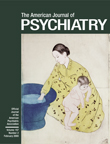This book is an excellent addition to the literature on autism. It is a scholarly written book presenting current information, diverse approaches, and some new areas of investigation that have not been addressed in other books. There is an extensive review of the literature in all of the chapters and well-documented references based on the research. The reviews exemplify the wealth of information that has been amassed since Kanner first identified autism in 1943.
Chapter 1 by Volkmar and Lord is a good introductory chapter that describes the evolution of the autism diagnosis and classification system, the criteria for the diagnosis and assessments, and current approaches. A helpful appendix includes the ICD-10 research diagnostic criteria and the DSM-IV criteria for autistic disorder (299.0).
A good review of epidemiologic surveys of autism is presented by Eric Fombonne. The studies are well illustrated with readable charts and their accompanying text. Fombonne reports on associated medical conditions, time trends, and prevalence rates as well as autism and immigrant status and social class. He states that recent surveys did not suggest increasing rates. However, those who are providing current services, such as school systems and private providers, have experienced a dramatic increase in prevalence rates. For example, the U.S. Department of Education reports a 173% increase in the number of autistic children served under the Individuals With Disabilities Education Act
(1).
Prior and Ozonoff contribute an excellent chapter on psychological factors in autism. They focus on key issues of sensory, motor, and perceptual development, the role of attention, motivation, general intellectual function, academic functioning, splinter abilities, memory, social development and behavior motion perception, language, theory of mind, and executive function. Their presentation is well balanced in providing different aspects of controversial topics such as theory of mind.
Szatmari and Jones address complicated information on genetic epidemiology in their chapter. They assist the reader by providing conclusions after each section. On the basis of 20 years of research, they state that autism is a genetic disorder and that there is no consensus on the mode of transmission of autism/pervasive developmental disorder.
In the chapter on neurobiology, Poustka extensively reviews the literature on topics such as neuroanatomy, brain imaging, and neurochemistry. He cites 237 references, of which 192 were written in the 1990s. This exemplifies the large body of work that has been done in these areas in the last 10 years. However, he notes that there is a great deal of conflicting evidence and suggests that, since there is no available framework of a unifying etiological concept of autistic disease, the relevance of the obvious organic etiology to the syndrome of autism remains unclear.
In McDougle’s chapter on psychopharmacology, it appears that even though there is an extensive literature and numerous studies showing the beneficial effects of medication, more controlled studies are needed.
Sandra Harris had the enormous task of synthesizing the extensive work that has been done in the behavioral and educational fields. She focuses on the major issues, emphasizing the importance of assessment, social skills, decreasing maladaptive behavior, and, particularly, early intervention. She states that “early intervention with children who have pervasive developmental disorders can in some cases markedly alter their developmental trajectory.”
There seems to be a difference regarding the above opinion in Howlin and Goode’s chapter on outcomes in adult life. They state that there is little good evidence to suggest that long-term outcome can be dramatically improved following the implementation of any particular intervention program. They lump intensive behavioral programs with holding therapy, scotopic sensitivity training, auditory integration, and music therapy, although the effectiveness of behavior therapy has been proven for more than 30 years. The book concludes with an interesting chapter by Waterhouse and Fein in which they combine a number of models and describe an integrative model of social behavior.
In summary, this book is an excellent reference for physicians, psychologists, and other professionals in the field as well as for parents who want an understanding of autism, a multidisciplinary approach, and the most current research. It is a thought-provoking text that acknowledges the tremendous attention paid to autism in the last 20 years. Although there is much to be learned, one senses that the field is on the verge of new discoveries and that the next edition of Autism and Pervasive Developmental Disorders will report this progress.

